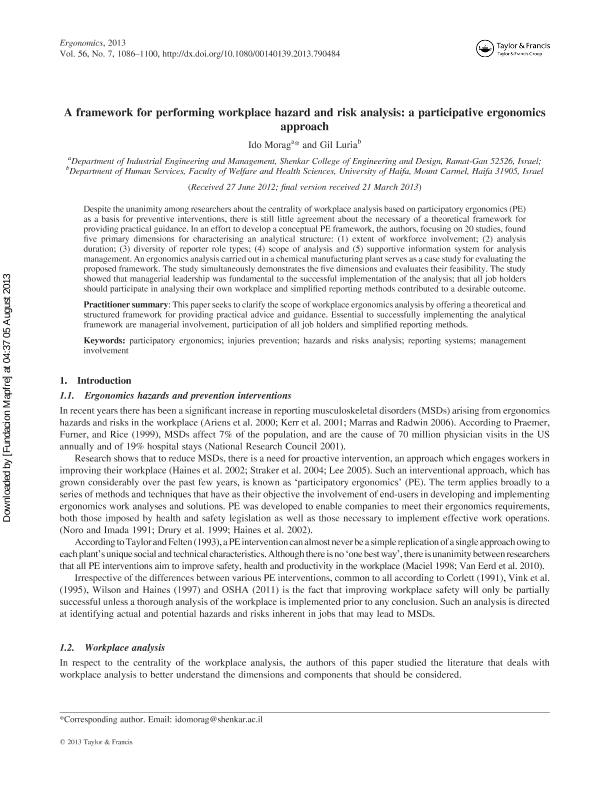A Framework for performing workplace hazard and risk analysis : a participative ergonomics approach

Contenido multimedia no disponible por derechos de autor o por acceso restringido. Contacte con la institución para más información.
| Tag | 1 | 2 | Valor |
|---|---|---|---|
| LDR | 00000cab a2200000 4500 | ||
| 001 | MAP20130025346 | ||
| 003 | MAP | ||
| 005 | 20130828144847.0 | ||
| 008 | 130805e20130701esp|||p |0|||b|spa d | ||
| 040 | $aMAP$bspa$dMAP | ||
| 084 | $a875 | ||
| 100 | 1 | $0MAPA20130010786$aMorag, Ido | |
| 245 | 1 | 2 | $aA Framework for performing workplace hazard and risk analysis$b: a participative ergonomics approach$cIdo Morag, Gil Luria |
| 520 | $aDespite the unanimity among researchers about the centrality of workplace analysis based on participatory ergonomics (PE) as a basis for preventive interventions, there is still little agreement about the necessary of a theoretical framework for providing practical guidance. In an effort to develop a conceptual PE framework, the authors, focusing on 20 studies, found five primary dimensions for characterising an analytical structure: (1) extent of workforce involvement; (2) analysis duration; (3) diversity of reporter role types; (4) scope of analysis and (5) supportive information system for analysis management. An ergonomics analysis carried out in a chemical manufacturing plant serves as a case study for evaluating the proposed framework. The study simultaneously demonstrates the five dimensions and evaluates their feasibility. The study showed that managerial leadership was fundamental to the successful implementation of the analysis; that all job holders should participate in analysing their own workplace and simplified reporting methods contributed to a desirable outcome. | ||
| 773 | 0 | $wMAP20100019818$tErgonomics : the international journal of research and practice in human factors and ergonomics$dOxon [United Kingdom] : Taylor & Francis, 2010-$x0014-0139$g01/07/2013 Volumen 56 Número 7 - julio 2013 |

